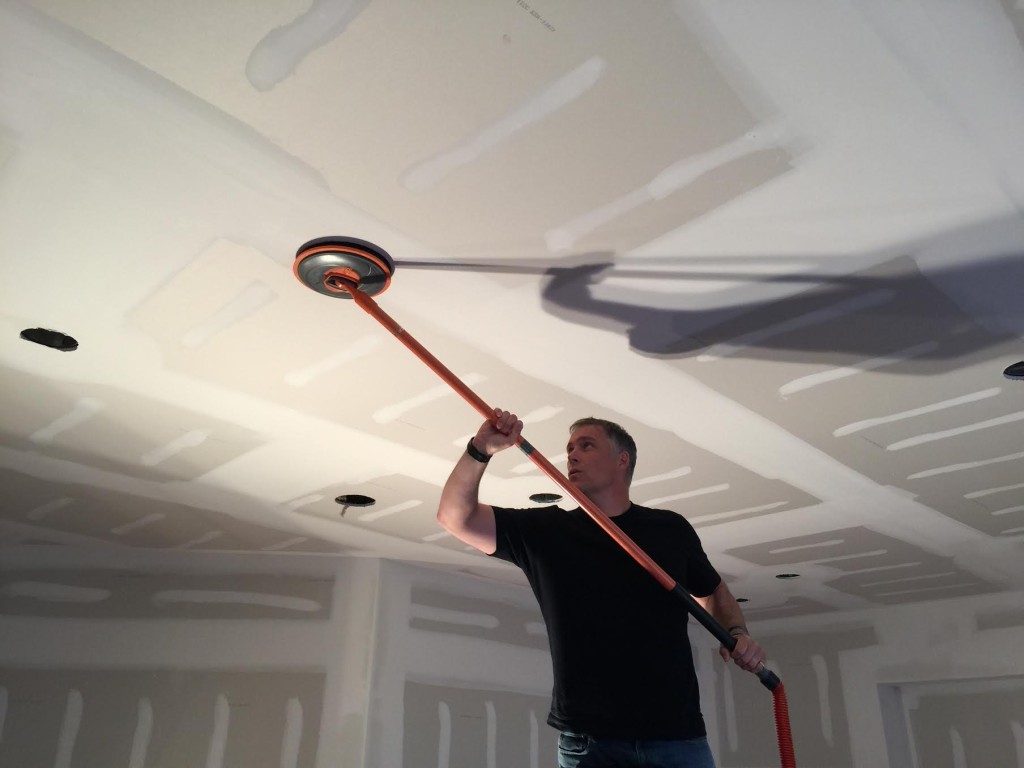Take the dust out of sanding cleanup
 Using a sanding system—pairing a hand or power sander with a vacuum—can save a significant amount of time on cleanup. That creates a safer work environment, improves client satisfaction, and puts money in your pocket. As a professional painting contractor, you probably put a lot of thought into the type of sander and abrasive you use for a given job, but it’s equally important to focus on the dust-extraction part of the equation.
Using a sanding system—pairing a hand or power sander with a vacuum—can save a significant amount of time on cleanup. That creates a safer work environment, improves client satisfaction, and puts money in your pocket. As a professional painting contractor, you probably put a lot of thought into the type of sander and abrasive you use for a given job, but it’s equally important to focus on the dust-extraction part of the equation.
“A system is only as good as the weakest link in the chain, so there are several factors you need to look at,” says Johannes Frick, head of business development/paint, at Festool. “How is the abrasive attached to the sander? How is the air stream collecting the dust between the sanding surface and the abrasive? Then, how do you connect the tool with the dust extractor—and how does it interact with the tool?”
Whether you’re using Festool’s integrated system (which turns on their proprietary extractor when you switch on the sander) or a sander that connects to a standard wet-dry shop vac, industry experts offer some best practices:
CONSIDER SPECS
Dust-free level claims range from 95% to 99.9%, depending on specific tools. The level you require is application-specific, of course, but working with lead paint or in a health care facility warrants going toward the higher end.
CHECK THE FILTER
Unless otherwise indicated on the label, off-the-shelf vacuums may have a cheaper stock filter installed.
“If you use the wraparound fibrous material ring that comes with the unit, it’s not going to have nearly the same filtration as a HEPA filter,” says Corey Talbot, VP of marketing and product development at Hyde Tools. “Using the better filter will pay for itself on the first job.”
HEED HORSEPOWER
Each manufacturer recommends the right vacuum for a given sanding tool, so that’s a vital spec to consider.
“It’s always better to go with a better vacuum,” says Kent Annis, owner of Full Circle International, Inc. “If you’ve got a 2-horsepower unit, there’s simply not enough suction.”
CONTROL THE SUCTION
In addition to the vacuum power setting at the unit itself, most sanding systems come with an adjustment valve on the hose to let more or less air into the system. That’s essential because too much suction will slow you down, hinder the airflow and dust extraction, and wear out the abrasive—not to mention the potential for unwanted patterning or flashing of the surface.
NO MORE TAPING
With plenty of adapters to fit a wide variety of hoses, there’s almost no excuse to have to jury-rig hoses together with duct tape at the job site—it’s a minor investment for more professional results.
It can take some experimentation to dial in a happy medium of smooth sanding and dust-free extraction, and it may require an upgrade in your current set of tools. But in the end, the time you save and the results you get are likely to boost your bottom line.
To learn more about dust cleanup when sanding, read the full-length feature article in the upcoming June/July issue of inPAINT magazine: inpaintmag.com




